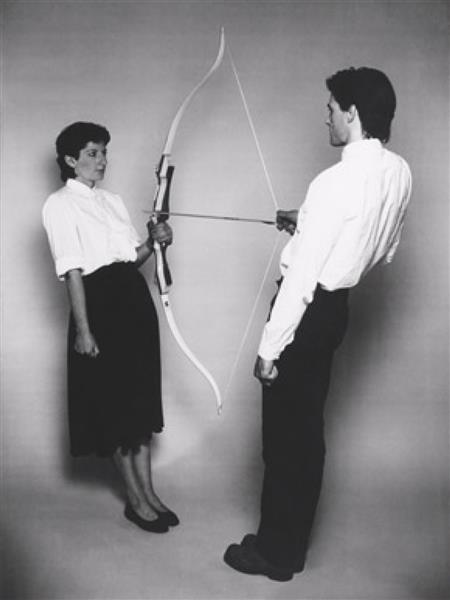description
Marina Abramovic is a Serbian and American artist, famous all over the world thanks to her extraordinary and shocking performances. She is rightfully considered one of the best in her genre, and her ideas related to physical pain and even a threat to life and health make viewers rethink their perception of many things and step far beyond the boundaries of the common understanding of the world and themselves.
November 30, 1946, Belgrade (Yugoslavia)
description
Yoko Ono is an English and American innovative artist, writer, and musician of Japanese descent. Yoko became known to the general public largely thanks to her marriage to John Lennon, a musician and member of the legendary Beatles band. However, long before this union, she clearly showed her talent in Conceptual art, becoming one of the pioneers of installation and performance.
February 18, 1933, Tokyo, Japan
description
An American artist and theorist, the central figure of the avant-garde of the 60s, the discoverer of the happening - a form of art in which the primary attention is paid to the process of creation. Allan Kaprow appreciated the moment of action in painting, putting it above the result.The fleeting, often quick and spontaneous actions of Kaprow erase the line between art and everyday life and immerse participants in the work, involving them in the creative process and destroying the notorious “fourth wall” between the work and the audience.In his theoretical writings, Allan Kaprow said that after the discoveries of Jackson Pollock and other Abstract Expressionists, painting could no longer exist in its original form. It must go beyond the canvas and move into everyday life.The master called himself “non-artist” and his works “anti-paintings”. “Life is much more interesting than art”, said Kaprow and created events outside galleries and museums: in courtyards, apartments, streets, squares and parking lots. Sometimes his works are even absurd - such as building houses from ice under the scorching California sun; they change the very perception of art and turn everyday life processes into creative acts.The principles of the creation of happening, which Allan Kaprow outlined in his work “How to Make a Happening”, were enthusiastically accepted by many post-war artists who tried to take a fresh look at modern creative methods. Thanks to the discoveries of the American innovator, such styles as installation, performance and conceptual art were further developed.
1927 - 2006
description
An American contemporary conceptual sculptor and artist. The art of Bruce Nauman includes a wide range of creative interests: performance and installation, photography and art video, works for the media, printing and industrial production. In all areas, the artist was attracted by the nature of communication, problems of the language and the role of the artist as a manipulator of visual symbols by the means of communication.Nauman received numerous awards in several areas of artistic practice and an honorary doctorate in arts from the American Art Institute. His works are widely represented around the world at the expositions of the most prestigious museums and galleries. The monumental creations of Bruce Nauman inspired many other artists in the second half of the 20th century and continues to be in demand in the 21st century. In 2004, Time Magazine named him as one of the 100 most influential people in the art world. In 2006, according to the rating of Artfacts.net, Bruce Nauman was number one among living artists.
1941
description
Ai Weiwei prepared this interesting large-scale performance-project for the world-wide exhibition-festival “Documenta”, which takes place every five years in the German city of Kassel. He invited 1001 Chinese readers of his blog to this exhibition, paying them for travel, accommodation and other facilities. For ordinary Chinese people, such a trip turned out to be a real fairy tale, since they could not even dream of the opportunity to visit Europe. In addition to inviting people, the artist also acquired 1001 chairs of the Qin Dynasty - the artist placed pieces of furniture throughout the territory allocated for the exhibition.
2007
